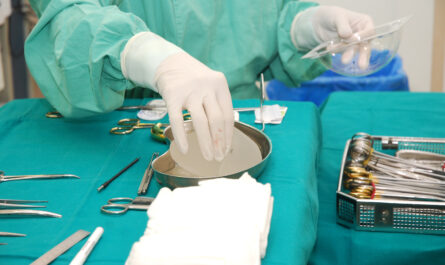
While developed nations continue to spend exorbitantly on healthcare, the challenges of reducing costs remain paramount. One area that shows great potential for cost savings is reprocessing single-use medical devices that are meant for one-time use only as per manufacturer guidelines. Medical device reprocessing if done carefully and as per regulatory norms can help cut costs substantially without compromising on quality and safety. This article explores how a balanced approach to reprocessing selected single-use devices can aid in reducing the economic burden on healthcare systems.
What is Medical Device Reprocessing?
Medical device reprocessing refers to the practice of cleaning, disinfecting, testing, remanufacturing and sterilizing already used single-use medical devices to make them suitable for reuse on additional patients. This includes devices such as laparoscopic instruments, electrodes, biopsy forceps and other specialized surgical tools that are categorized as single-use by their original equipment manufacturers. The reprocessing is carried out by specialized third-party firms that have been cleared by regulatory authorities to follow prescribed cleaning, disinfection, inspection and sterilization protocols. Cleared devices are then provided with a sterility assurance level at par with brand new sterilized devices.
Potential for Cost Savings
The costs of routinely discarding single-use devices after one use can add up substantially over time for both hospitals as well as taxpayers. Studies have estimated that 5-10% of hospital expenditure is accounted for by costs associated with single-use medical devices. Reprocessing select devices as per prescribed norms allows for 80-90% reduction in device costs per procedure over brand new single-use variants. Hospitals stand to gain the most as reprocessed devices cater to their needs at a fraction of the price of original ones. This in turn reduces burden on public health budgets and eases constraints on overall healthcare expenditure.
Regulatory Guidelines and Safety Considerations
To ensure patient safety and quality standards are not compromised, medical device reprocessing is governed by guidelines issued by health and regulatory bodies globally. In the US, the FDA maintains a list of devices that can be safely reprocessed based on rigorous testing standards. Similarly, the TGA in Australia and MHRA in the UK have protocols for companies to comply with before certified. Only devices from firms that adhere to prescribed cleaning, disinfection, quality testing and sterilization SOPs are authorized for reuse. Third party validation and batch-wise clearance is required. This balances costs saving with high quality and safety norms.
Economic and Environmental Benefits
Besides financial savings, reprocessing selected single-use devices leads to reduction in medical waste generated. As per estimates, remanufacturing can help reduce sharps, plastics and other waste by almost 90% compared to one-time use. This has economic benefits, as well as reduced stress on the environment from disposal of medical waste. Studies show each reprocessed device saves multiple oil barrels through reduced need for fresh plastic production. With growing sustainability concerns, medical device reprocessing serves the dual purpose of lowering costs and saving resources through reuse over recycling.
Gaps that Remain
While significant cost reductions and environmental benefits are evident, some gaps remain that need to be addressed for full potential of reprocessing to be realized. Lack of clear guidelines in some developing nations pose issues. Also, changing mindsets to accept reused devices requires education of stakeholders. More research is also needed to expand the number of devices proven to be safely reprocessed. Supply chain complexities for refurbished devices remain another challenge area. Overall though, a balanced and well-regulated reprocessing framework can carve a viable path to contains costs without compromising quality care standards.
Conclusion
With ever rising healthcare expenditures, finding innovative ways to lower treatment costs without undermining patient safety is imperative globally. Medical device reprocessing offers a responsible option to reduce expenditures and cut waste substantially if implemented judiciously. However, it needs clear regulatory protocols and should only focus on devices proven to withstand established refurbishing standards. Ongoing research will help assess new devices for potential reuse sustainably. Overall, a well-regulated single-use device reprocessing sector can unlock significant savings for cash-strapped public health systems. With proper safeguards, it shows merit as a prudent strategy to cut costs and conserve resources.
*Note:
- Source: Coherent Market Insights, Public sources, Desk research
2. We have leveraged AI tools to mine information and compile it



